Editor’s note: Prof. Ronit Calderon-Margalit has been modelling coronavirus statistics throughout the pandemic, and was featured in the HU webinar “Simulating and monitoring COVID-19: Physics, Medicine and Epidemiology Working Together.”
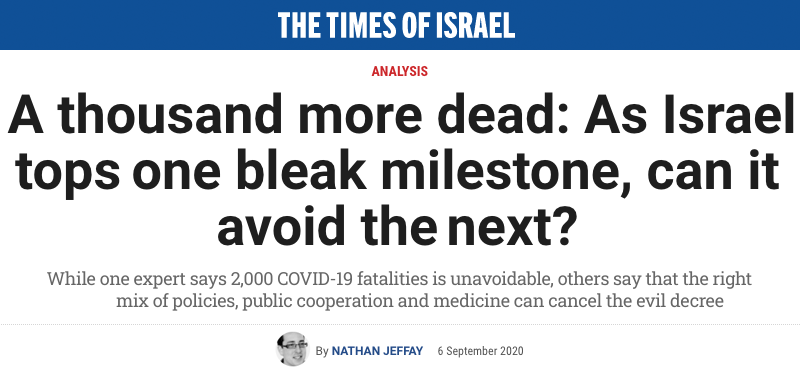
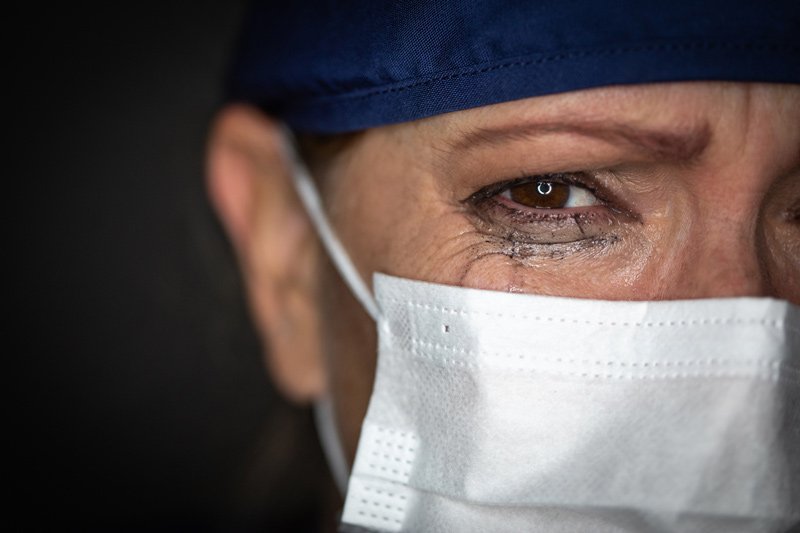
On Saturday, Israel reached, and surpassed, 1,000 deaths from the novel coronavirus. The toll, a grim reminder of the pathogen’s most ruinous consequences, is only a fraction of the eventual number of fatalities Israel may see, according to one expert. But others believe that Israel’s fate is not sealed.
Israel recorded over 420 deaths in August and there are signs the pace of fatalities could be ramping up. Even at the current pace, Israel could record its 2,000th death by the middle of November.
Another thousand fatalities is “unavoidable,” according to Dan Yamin, a leading health statistics expert.
“There will be between 2,000 and 4,000 people dead from coronavirus in Israel altogether,” said Yamin, head of Tel Aviv University’s Laboratory for Epidemic Modeling and Analysis.
While dire, the number is well below the 12,000 deaths he predicted at the start of the outbreak.
Yamin said that improved social distancing, use of face masks and other positive developments have pushed down his model’s predictions, but they won’t keep the toll as low as people hope.
“The deaths will continue until we have a vaccination, get to herd protection, or have very accurate and fast testing,” said Yamin, a former associate research scientist at Yale University School of Health’s Center of Infectious Disease Modeling.
But others are more optimistic, saying that government policies and other factors can still keep the toll from doubling before a vaccine or herd immunity arrives.

“It is definitely possible to avoid the accumulation of 1,000 new deaths. It depends on the actions that will be taken,” Eli Waxman, formerly a top government adviser on the virus, told The Times of Israel
Waxman, who used to head the National Security Council’s Expert Advisers’ Committee on Combating the Pandemic, has confidence that restrictions, if deployed well, can drive down deaths.
In hospitals, some doctors are irked by the notion that Israel will inevitably see another thousand deaths.
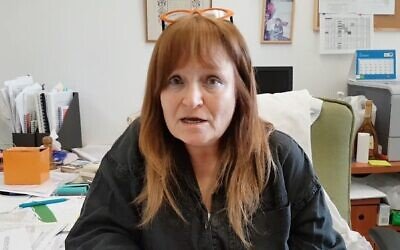
“We just can’t know,” said Galia Rahav, head of infectious diseases at Sheba Medical Center in Ramat Gan.
Treatment is constantly improving and the standard “cocktail” of the American coronavirus drug remdesivir, the steroid dexamethasone and blood thinners is proving effective. “This cocktail is given to almost all the patients and we have fewer deaths. It helps,” she told The Times of Israel.
Rahav added: “We’re doing late mechanical ventilation and getting better outcomes.”
She said people shouldn’t jump to the conclusion that current pace of some 400-500 deaths a month will stay the same, as deaths don’t occur at a consistent rate.
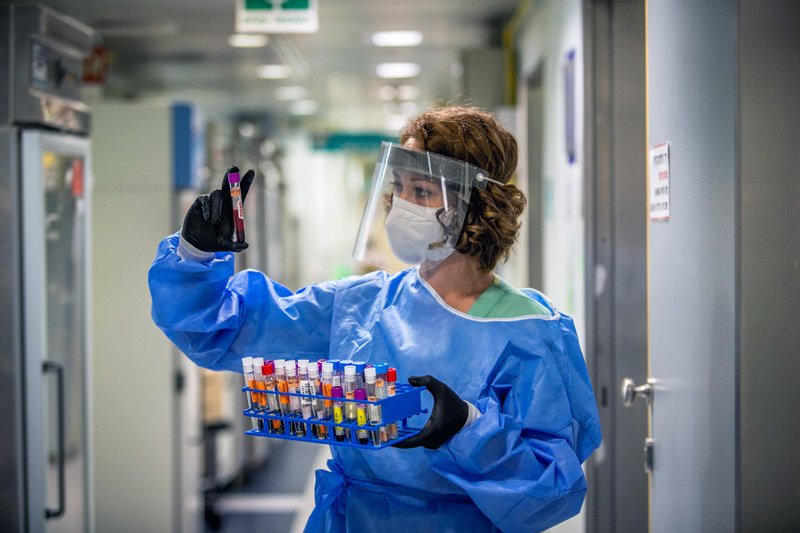
Yamin arrived at his death toll estimate based on the current rate of infection, and the proportion of how many infected people have died to date, he said. As of Sunday evening, there were over 130,000 infection and 1,010 deaths, or about one death for every 128 infections, far below the worldwide rate of about one death for every 30 infections.
Yamin said he does not expect the toll to go much above 4,000, as by then there will likely either be a vaccine or Israel will have reached herd immunity.
Like many other researchers, Yamin believes that only a minority of infected people are confirmed coronavirus-positive, and that the actual number of cases is far higher than stats suggest, meaning that Israel, with over one percent of the population already confirmed infected or recovered, is already well on its way to hitting a threshold that will cause the virus to die out on its own for lack of hosts.

But until then, the country is destined to see significant case numbers and many more deaths, Yamin warned.
“Israel is the ideal setting for infection spread because of the density of the country and because certain populations have high household sizes.”
Waxman believes that there is still time for strong measures to minimize deaths.
A COVID-19 stats expert and professor of physics at the Weizmann Institute of Science, Waxman is a critic of lockdowns and a big believer in steps like improved contact tracing, testing, and building public trust — which have been given more emphasis by authorities since he outlined his plans to The Times of Israel a month and a half ago.
He said these changes can help to prevent another thousand deaths, but more immediately, Israel needs a period of stricter social distancing rules to force down infection rates. “The test-trace-isolate capability is crucial, but will be effective only when the numbers get down below around 100 newly infected people per day,” he said. “This would need to be achieved by more stringent social distancing measures. Once we get to this rate, we could relieve the restrictions, get back to near-normal activity, and let the test-trace-isolate capability take over.”
Waxman’s belief that the right policies can stop Israel from seeing another thousand deaths is echoed by Ronit Calderon-Margalit, a prominent epidemiologist. She said that even before a vaccine or herd immunity, infection rates can be reduced and “we can get to low levels of morbidity and get to low levels of mortality — what we call containment.”
Calderon-Margalit, part of an interdisciplinary Hebrew University team that has been modeling coronavirus stats throughout the pandemic, said that Israel can steer clear of a 2,000 death count, but it will take “radical steps” to improve epidemiological investigations of infected people and to break chains of transmission.
Israel’s coronavirus czar Ronni Gamzu has boosted the emphasis on this and tapped military expertise, but Calderon-Margalit said that still more efforts are needed.
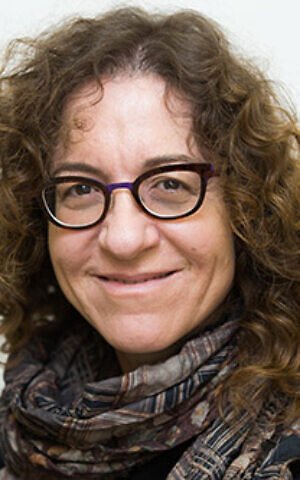
Discussing the wider picture, she added: “We could need some kind of restriction for the High Holidays — I don’t know whether a full lockdown or some kind of restriction on mobility.”
The new “traffic light” system, that imposes stricter rules and closure on “red” cities where there are many cases, won’t limit the number of deaths, she said, arguing: “Even if you close down red cities it will have some effect on morbidity but it’ll be quite minor as the numbers in these areas won’t be a major fraction of the incidences of the virus.”
She is more concerned about spread of the virus over Rosh Hashanah and the subsequent Jewish holidays, which start September 18, than at schools.
“The reopening of schools will cause more cases, though at first this will be concentrated on students and teachers, who tend to be young and will have low morbidity. But if other gatherings are opened up, some of them in closed spaces and some multi-generational, vulnerable populations will be affected.”
Transmission of the virus to the elderly, at such multi-generational gatherings — whether prayers or family events — raises a real risk of increasing deaths, she said,
This, she said, is why strict limits will prove key if Israel is to avoid another 1,000 deaths: “If we continue with the measures taken so far, we won’t.”